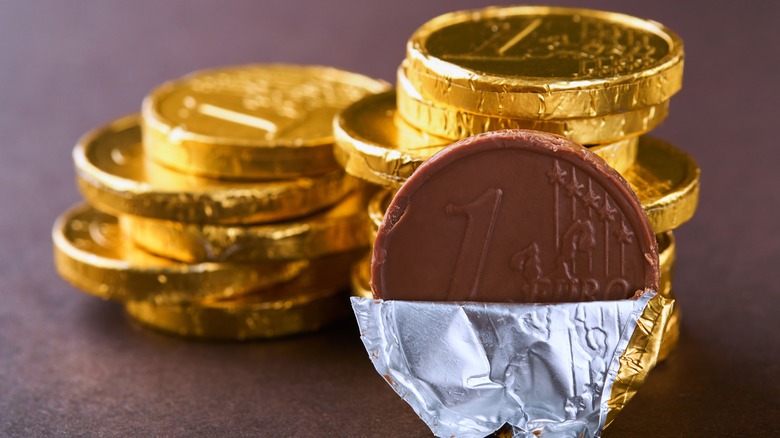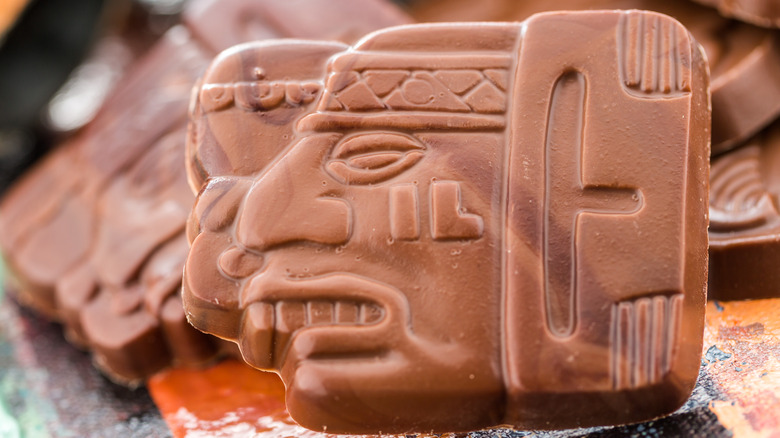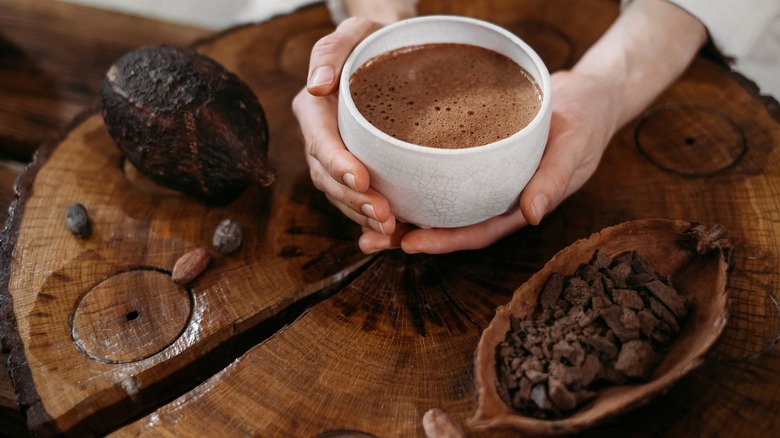Before We Had Chocolate Bars, Cacao Was Actually A Form Of Currency
From a very young age, we are told not to play with our food. There's a good reason to heed this command. No one wants sticky fingers. But if you examine the past, you'll quickly find examples of foods that flew in the face of this colloquialism and had uses that went beyond simple consumption.
For example, the strange history behind the invention of the graham cracker involves Reverend Sylvester Graham, who created a flavorless version of the now-ubiquitous sweet snack in order to rid an increasingly sinful society of devious desires. Coca-Cola used to have real cocaine in it. The morphine-addicted inventor of classic Coke, John Pemberton, first marketed his fizzy beverage as a restorative wine. Chocolate, one of the absolutely essential staples of the dessert sphere, wasn't always just a sweet treat. Cacao beans used to hold a key position in culture — at one time, a cacao pod could be worth a pretty penny.
The early history of cacao beans
The bitter cacao bean first became a staple of the human diet in parts of ancient Central America. Though it was potentially first concocted by the Olmecs, most of chocolate's early history is associated with the Mayans. In modern-day Guatemala, you can look at the country's Mayan chocolate history by examining ancient artifacts, many of which are carved with cacao bean imagery.
When you first hear about ancient chocolate money, your mind may conjure images of golden foil-wrapped chocolate coins. In an interview with Atlas Obscura, anthropologist Cameron McNeil, the author of "Death and Chocolate: The Significance of Cacao Offerings in Ancient Maya Tombs and Caches at Copán," explains that archaeologists have uncovered many pieces of gorgeous Mayan dishware, which are thought to have served as chocolate drinking receptacles. Cacao beverages were enjoyed in such ornate cups because they were so valuable. A gift of cacao was fit for a king, and chocolate could even serve as a funeral favor.
The cash value of chocolate in Mayan society
In Mayan culture, chocolate's worth wasn't merely an abstract concept. In fact, some early Mayan artwork suggests coffee played a role in their society's trade system. One painting, which is dated back to the mid-seventh century, clearly depicts a woman giving a man a piping hot bowl of liquid chocolate in exchange for a lump of tamale dough.
However, chocolate wasn't only used in bartering deals. Cacao beans had a specific monetary value associated with them. Many other pieces of Mayan art feature bags of cacao labeled with the number of individual beans carried within them being used in a trade setting, which suggests that cacao beans played a similar role in Mayan society to that of coins in the modern market. This artwork also seems to tell us that Mayan rulers demanded that their subjects prove their fealty by delivering a cacao bean tax. In fact, the collapse of Mayan civilization can possibly be attributed, in part, to a drought that decimated the cacao crop, which disrupted the economy and ultimately led to political chaos.


